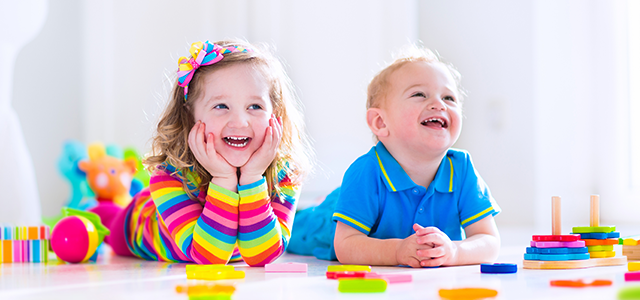
Okay, you might think an article on safe toys is silly ... aren’t all toys created with children in mind? Well, things get recalled and sharp edges can hurt. As with most safety-related concerns, knowledge lies in the areas we rarely think to question.
For example, consider the danger of easy-access battery compartments. How about the danger of balloons – which cause one third of all toy-related deaths?
There is a lot to know, which is why we came up with this list of ways to keep the playroom a little safer.
1. Flying is for aircraft, not toys: If you’re a fan of film, you’re no doubt familiar with the endless mockery Ralphie endures in 1983’s “A Christmas Story.” Each time the poor kid expresses his desire for a BB gun, all he ever hears is, “No, you’ll shoot your eye out!” Even Santa chimes in.
These adults know what they’re talking about. Toys that propel darts, or those that just simply fly (like helicopters), are risky.
Understanding that risk is important because, unfortunately, some eye injuries can remain a life-long obstacle. Be careful when choosing such toys for your little ones.
2. Ability vs. Age: Generally, a toy’s instructions reference its safety in connection with the child’s age. But any parent knows that not every child behaves the same because of how far away they are from their birth year.
So, use your own judgement when purchasing toys for your kids – only you know if they’re ready.
3. No sharps: No doubt you’re vigilant in keeping your kids away from sharp parts. However, a more thorough way of examining the threat of harm is to consider “protruding” parts.
Take a sippy cup, for example. Relatively harmless, right? And yet, thousands of children a year are brought to the ER because of a fall that resulted in them smacking some part of their body on the protruding edge of their sippy cup.
So, think protrusions. Anything that juts out from an otherwise rounded surface can be suspect.
4. No little parts: Ever wonder how a part is classified as small? Well, apparently, there’s an entire engineering process behind the decision, and you can even purchase your own small parts tester to see if your toys pose a risk to your young ones.
Choking is one of the biggest hazards for children, so watch out for small parts!
5. Long string is a big no-no: Strings over seven inches are common causes of choking in children. Anything from balloons to bib cords can be harmful.
6. Electric and Battery-powered toys: Use your judgement here, but toys that get excessively hot can be problematic.
The same goes for toys with battery compartments kids can get into. You definitely don't want your children swallowing batteries!
7. Learn about recalls: Keeping up to date with recalls is always a good idea. The place to look is the government’s Consumer Product Safety Council website. It’s all there, from toys to tractors.
8. Vintage toys might be better left on the shelf: Toys from prior decades were constructed with different safeguards in place.
If you're in the position now to purchase vintage toys, they might be better used for display than play time.
9. Tidy up: One of the simplest ways to keep your kids safe is to keep their play areas free of toys. If you’ve ever tripped over a toy anywhere in your house, you’re the perfect candidate for this bit of advice.
Here’s a great list to start from … maintaining a tidy playroom (and house) isn’t just about bins and stickers!
10. Are they on the W.A.T.C.H. list? Toys that have been relegated to the "World Against Toys Causing Harm" list are likely worth avoiding. The organization has been keeping kids safe since 1973. Find the list here.
Finally, when you’re buying toys for your kids, be on the lookout for the mark of the American Society for Testing and Materials (ASTM). This tag means the toy has met national safety standards – it’s a good place to start when it comes to protecting your entire family.
